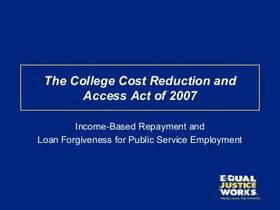- Known for its innovation and its visionary thinking, Lone Star College System is the largest institution of higher education in the Houston area and the fastest growing community college system in Texas. LSCS offers associate degrees and certification in about many areas of study.Through its progressive partnerships with four-year universities, LSCS can also offer seamless opportunities to obtain bachelor's and master's degrees at one of its two University Centers.
School Highlights
Lone Star College System serves 103,845 students (21% of students are full-time).
The college's student-teacher ratio of 24:1 is higher than the state community college average of 23:1.
Minority enrollment is 72% of the student body (majority Hispanic), which is less than the state average of 74%.
Quick Facts (2025-26)
- Enrollment: 103,845 students
- In-state tuition: $3,184
- Out-state tuition: $3,544
- Student-teacher ratio: 24:1
- Minority enrollment: 72%
- Source: Verified school update
Top Rankings
Lone Star College System ranks among the top 20% of public schools in Texas for:
Category
Attribute
Affordability
Diversity
Community Size
Debt For Students
School Overview
The teacher population of 4,405 teachers has stayed relatively flat over five years.
Lone Star College System
(TX) Community College Avg.
Carnegie Classification
Associate's Colleges: High Transfer-Mixed Traditional/Nontraditional
Baccalaureate/Associate's Colleges: Associate's Dominant
Institution Level
Four or more years
At least 2 but less than 4 years
Institution Control
Public
Public
Total Faculty
4,405 staff
262 staff
School Calendar
Student Body
The student population of Lone Star College System has grown by 39% over five years.
The student-teacher ratio of 24:1 has increased from 16:1 over five years.
The Lone Star College System diversity score of 0.74 is more than the state average of 0.70. The school's diversity has stayed relatively flat over five years.
Total Enrollment
103,845 students
4,931 students
Student-Teacher Ratio
24:1
23:1
# Full-Time Students
21,313 students
909 students
# Part-Time Students
82,532 students
4,022 students
# Enrollment Undergraduate
103 students
403 students
# Full-Time Undergraduate Students
21,313 students
890 students
# Full-Time Graduate Students
n/a
40 students
# Part-Time Undergraduate Students
82,532 students
4,166 students
# Part-Time Graduate Students
n/a
47 students
Total Dormitory Capacity
n/a
252 students
% American Indian/Alaskan
n/a
n/a
% Asian
8%
6%
% Hispanic
39%
46%
% Black
14%
13%
% White
28%
26%
% Two or more races
4%
3%
% Non Resident races
3%
2%
% Unknown races
3%
4%
Diversity Score
0.74
0.70
College Completion Rate (Students who graduate in less than 4 years)
43%
55%
College Completion Rate (Students who graduate in 4 years or more than 4 years)
18%
34%
Average Graduate Earnings (10 Years)
$37,300
$34,600
Tuition and Acceptance Rate
The public in-state tuition of $3,184 is less than the state average of $3,764. The in-state tuition has declined by 47% over four years.
The public out-state tuition of $3,544 is less than the state average of $6,054. The out-state tuition has declined by 53% over four years.
In-State Tuition Fees
$3,184
$3,764
Out-State Tuition Fees
$3,544
$6,054
% Students Receiving Some Financial Aid
71%
84%
Median Debt for Graduates
$8,000
$10,765
Median Debt for Dropouts
$4,602
$5,500
Acceptance Rate
n/a
84%
Source: 2024 (or latest year available) Integrated Postsecondary Education Data System (IPEDS) , School Administrators
School Notes
- The idea of a college campus in the North Houston region was once only a vision in the minds of community leaders. It began the journey to reality in 1972 when residents in the Aldine, Humble and Spring Independent School Districts elected to create a junior college district, which became known as North Harris County College. We opened our doors in the fall of 1973 and our 16-member staff welcomed 613 students to the first classes held at Aldine High School. NHMCCD is one of the largest and fastest growing community colleges in Texas. Over 41,000 students register for credit courses each semester with an additional 15,000 in continuing education courses. The college district serves an area over 1,400 square miles, encompassing the school districts of Aldine, Conroe, Cypress-Fairbanks, Humble, Klein, Magnolia, New Caney, Splendora, Spring, Tomball Willis, and the surrounding communities. NHMCCD comprises North Harris College, Kingwood College, Tomball College, Montgomery College, and Cy-Fair College as well as satellite centers - Carver, Parkway, Career and Technology Center, East Montgomery County Improvement District, Fairbanks, Willow Chase and the Center for Business & Technology Training. The University Center, a partnership with NHMCCD and six Texas universities, provides over 60 bachelor's, master's, and doctorate programs. NHMCCD offers Honors Program, Service Learning, Learning Communities and Distance Learning programs.
Frequently Asked Questions
How much does Lone Star College System cost?
Lone Star College System's tuition is approximately $3,184 for In-State students and $3,544 for Out-State students.
What schools are Lone Star College System often compared to?
Lone Star College Systemis often viewed alongside schools like Houston Community College by visitors of our site.
What is Lone Star College System's ranking?
Lone Star College System ranks among the top 20% of community college in Texas for: Least expensive tuition, Diversity in US community colleges, Largest student body and Least debt for graduating students.
In what neighborhood is Lone Star College System located?
Lone Star College System is located in the Research Forest neighborhood of The Woodlands, TX.
Recent Articles

Community College Success Rates 2025: Outcomes & Trends
Updated 2025 analysis of community college success rates, completion, transfer, costs, enrollment, and strategies that shape student outcomes.

Community Colleges in 2025: Combating Stereotypes with Impact
Updated insights on how community colleges are dispelling myths, growing enrollment, and expanding pathways in 2025.

2025 FAFSA Changes Explained for Community College Students
A comprehensive guide to 2025 FAFSA changes, what community college students must know, new eligibility rules, timelines, and tips to maximize federal aid.









